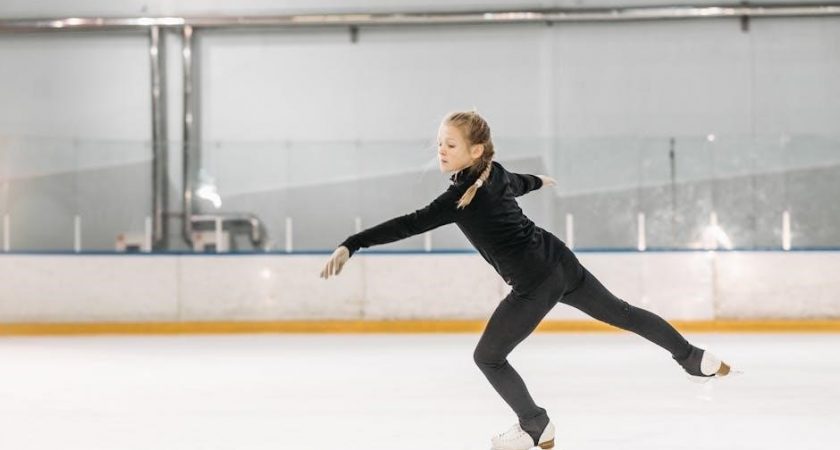Tendon gliding exercises are specialized movements designed to enhance tendon flexibility and mobility, promoting optimal joint function and reducing stiffness.
1.1 What Are Tendon Gliding Exercises?
Tendon gliding exercises are non-resistance movements designed to improve tendon mobility and flexibility. These exercises focus on the smooth sliding of tendons within their sheaths, enhancing joint movement and reducing stiffness. They are often used in rehabilitation to restore normal tendon function after injury or surgery. By promoting proper tendon alignment and reducing adhesions, these exercises help maintain healthy tendon function and overall mobility. Regular practice can prevent stiffness and improve range of motion in affected areas, making them essential for tendon health and recovery. They are simple, effective, and can be tailored to specific needs or injuries, ensuring optimal tendon function and joint health.
1.2 Importance of Tendon Health
Tendons play a critical role in connecting muscles to bones, enabling smooth movement and force transfer. Healthy tendons ensure proper joint function, stability, and mobility. Neglecting tendon health can lead to injuries, chronic pain, and limited movement. Strong, flexible tendons are essential for athletic performance, daily activities, and overall musculoskeletal resilience. Maintaining tendon health through targeted exercises and care is vital for preventing injuries and supporting long-term physical function and well-being.
1.3 Why Tendon Gliding Exercises Are Essential
Tendon gliding exercises are essential for maintaining tendon health, preventing stiffness, and improving joint function. They promote blood flow, reduce friction, and enhance collagen alignment, which strengthens tendons and minimizes injury risk. Regular practice helps restore mobility in injured or surgically repaired tendons, making them a cornerstone of rehabilitation and injury prevention. These exercises are simple yet effective, benefiting both athletes and individuals with sedentary lifestyles by ensuring optimal tendon and joint performance.

Understanding Tendon Gliding Exercises

Tendon gliding exercises focus on improving tendon mobility and joint mechanics, ensuring smooth movement by addressing tendon flexibility and strength, essential for injury prevention and enhanced performance.

2.1 Definition and Purpose
Tendon gliding exercises are targeted movements that improve tendon mobility by enhancing the sliding motion of tendons over bones and joints. Their primary purpose is to restore or maintain proper tendon function, ensuring smooth movement and reducing stiffness. These exercises are particularly beneficial for individuals recovering from injuries or surgeries, as they promote tendon flexibility without overloading the musculoskeletal system. Regular practice helps prevent tendon adhesions, enhances joint mobility, and supports overall musculoskeletal health, making them essential for both rehabilitation and daily maintenance.
2.2 How Tendon Gliding Exercises Work
Tendon gliding exercises work by promoting controlled movements that enhance tendon flexibility and mobility. These exercises target the sliding mechanism of tendons within their sheaths, reducing friction and improving joint function. By focusing on specific ranges of motion, they stimulate synovial fluid production, which lubricates tendons for smoother movement. Regular practice strengthens tendon structures and enhances their ability to glide efficiently, leading to better joint mobility and overall musculoskeletal health. Consistency is key to maintaining optimal tendon function and preventing stiffness or injury.
2.3 Benefits for Mobility and Strength
Tendon gliding exercises significantly enhance joint mobility by improving tendon flexibility and reducing stiffness. They strengthen tendons, boosting resilience against stress and injury. Regular practice also improves muscle coordination, ensuring smoother, more efficient movements. These exercises are particularly beneficial for individuals seeking to maintain or restore functional strength, especially after periods of inactivity or rehabilitation. By promoting optimal tendon function, they contribute to overall musculoskeletal health and performance.
The Science Behind Tendon Gliding
Tendon gliding involves the biomechanics of tendon movement, enhancing flexibility by improving collagen fiber alignment and reducing internal friction during muscle contractions.
3.1 Anatomy of Tendons
Tendons are strong, fibrous tissues connecting muscles to bones, enabling movement. Composed of collagen fibers, they vary in shape and size. Their structure allows them to withstand tension while facilitating joint mobility. Tendons are avascular but contain nerves, making them sensitive to pain. Their elastic properties help store and release energy during movement. The tendon-bone junction is critical for force transmission. Understanding tendon anatomy is essential for appreciating how gliding exercises promote flexibility and strength, reducing injury risk and improving overall joint function.
3.2 Role of Tendons in Movement
Tendons are crucial for movement as they connect muscles to bones, enabling force transmission and joint mobility. They store energy during activities like running, improving efficiency. Tendons also adapt to stress, enhancing performance and reducing injury risk, making them vital for both strength and flexibility in daily and athletic movements.
3.3 How Gliding Improves Tendon Function
Tendon gliding enhances tendon function by reducing friction between tendons and surrounding tissues, improving mobility. These exercises promote the sliding of tendons within their sheaths, minimizing adhesions. Regular practice strengthens tendon fibers, improving elasticity and reducing stiffness. Gliding also enhances blood flow, delivering nutrients and oxygen to tendon cells, which supports repair and growth. Over time, this leads to better joint mobility, flexibility, and reduced risk of injury, ensuring optimal tendon performance in daily activities and sports.

Benefits of Tendon Gliding Exercises
Tendon gliding exercises improve flexibility, reduce stiffness, and enhance joint mobility. They strengthen tendons, lowering injury risk and promoting faster recovery, while optimizing overall movement efficiency.
4;1 Enhanced Flexibility
Tendon gliding exercises significantly improve flexibility by enabling tendons to glide smoothly within their sheaths, reducing stiffness and enhancing joint mobility. Regular practice helps maintain optimal tendon function, allowing for a greater range of motion. These exercises are particularly beneficial for athletes seeking improved performance and for individuals recovering from injuries. Consistent practice promotes better movement efficiency and reduces the risk of future injuries, making tendons more adaptable to physical demands and supporting overall musculoskeletal health effectively, while preventing potential issues.
4.2 Reduced Injury Risk
Tendon gliding exercises significantly reduce injury risk by improving flexibility, strength, and tendon resilience. Enhanced mobility and joint stability lower the likelihood of strains and overuse injuries. Strengthening tendons helps absorb stress, preventing damage during physical activities. Regular practice promotes balanced muscle-tendon function, further minimizing injury susceptibility. These exercises are particularly beneficial for athletes and individuals with repetitive motion routines, ensuring optimal tendon health and durability over time.
4.3 Improved Joint Mobility
Tendon gliding exercises significantly enhance joint mobility by allowing tendons to move freely within their sheaths, reducing friction and preventing adhesions. Improved mobility ensures smoother joint function, reducing stiffness and discomfort. Regular practice promotes better alignment and coordination, enabling joints to operate within their full range of motion. This enhancement not only improves physical performance but also lowers the risk of injuries, making daily activities and athletic movements more fluid and efficient over time.
4.4 Faster Recovery
Tendon gliding exercises accelerate recovery by improving blood flow and promoting collagen alignment in damaged tendons. Enhanced circulation delivers essential nutrients, reducing inflammation and scar tissue formation; Consistent practice post-injury or surgery strengthens tendons, minimizing stiffness and soreness. This targeted approach ensures faster return to normal activities. Regular gliding exercises also prevent re-injury by restoring tendon elasticity and resilience. Incorporating these movements into rehabilitation routines fosters a quicker, more effective recovery process.
- Improves blood circulation
- Reduces inflammation
- Prevents scar tissue buildup
- Restores tendon elasticity

Step-by-Step Guide to Performing Tendon Gliding Exercises
- Start with a proper warm-up to prepare tendons and muscles.
- Focus on slow, controlled movements to maximize tendon glide.
- Gradually increase range and resistance as comfort allows.
- Practice regularly to maintain and improve tendon health.
5.1 Preparation and Warm-Up
Before starting tendon gliding exercises, proper preparation is essential to ensure safety and effectiveness. Begin with a gentle warm-up to increase blood flow and flexibility. Light cardio, such as brisk walking or cycling, can prepare the muscles. Dynamic stretching, like arm circles or leg swings, is also beneficial. Ensure the area is free from tight clothing or restrictions. Hydration is crucial to maintain tendon health. If recovering from an injury, consult a healthcare professional to tailor the warm-up routine. This step sets the foundation for a safe and productive exercise session.
5.2 Basic Tendon Gliding Techniques
Basic tendon gliding techniques involve gentle, controlled movements that promote tendon and muscle interaction. Start with slow, deliberate motions to avoid strain. Focus on isolated joint movements, such as finger bends or wrist rotations, to target specific tendons. Use light resistance, like with a rubber band, to enhance effectiveness. Perform 3 sets of 10-15 repetitions for optimal results. Emphasize proper form and avoid bouncing or forcing movements. These techniques improve tendon flexibility and prepare the body for more advanced exercises.
5.3 Progressing Your Routine
As you advance, gradually increase the difficulty of tendon gliding exercises by adding resistance, such as light weights or resistance bands. Incorporate more complex movements and vary the speed of exercises to challenge tendons further. Introduce dynamic stretches to enhance flexibility and strength. Ensure progression is gradual to avoid overloading the tendons. Regularly assess your range of motion and strength to tailor your routine effectively. Seek professional guidance to adjust exercises based on your progress and goals.
5.4 Cool-Down and Stretching
A proper cool-down after tendon gliding exercises helps transition the body back to a resting state, reducing muscle tension and promoting relaxation. Gentle stretching can improve flexibility and reduce stiffness, focusing on static stretches for major muscle groups. Deep breathing exercises during this phase enhance oxygen flow and aid in recovery. It’s important to maintain proper form to avoid injury and ensure maximum benefit. A well-structured cool-down routine supports overall tendon health and prepares the body for future activity.

Common Tendon Gliding Exercises
Tendon gliding exercises target specific areas, improving mobility and strength. Common exercises include wrist extensions, finger bends, and ankle rotations, promoting smooth tendon movement and functionality.
6.1 Exercises for the Hands and Wrists
Tendon gliding exercises for the hands and wrists focus on improving flexibility and mobility in the tendons of the fingers, wrists, and forearms. Simple exercises include finger bends, extensions, and rotations. These movements help maintain tendon health, prevent stiffness, and enhance dexterity. Regular practice can reduce the risk of injuries like carpal tunnel syndrome and improve overall hand function. Start with gentle repetitions and gradually increase intensity as comfort allows.
6.2 Exercises for the Fingers
Finger tendon gliding exercises focus on improving dexterity and reducing stiffness. Start with gentle finger extensions, then progress to bending fingers into a fist. Use resistance bands for added challenge. Practice individual finger stretches to target specific tendons. Regular practice enhances flexibility, strength, and coordination. These exercises are especially beneficial for musicians, typists, or those with hand-related injuries. Always maintain proper form to avoid strain or injury during the routines.
6.3 Exercises for the Shoulders
Shoulder tendon gliding exercises, such as arm circles, cross-body stretches, and shoulder flexion, help maintain tendon health and mobility. These movements improve range of motion and prevent stiffness, reducing the risk of injuries like tendinitis. Regular practice enhances joint function and strengthens surrounding muscles, promoting overall shoulder stability. Consistency is key to achieving long-term benefits and preventing common shoulder-related issues.
6.4 Exercises for the Elbows
Elbow tendon gliding exercises focus on improving flexibility and strength in the forearm and elbow tendons. Start with gentle wrist extensions, slowly lifting the hand upward while keeping the forearm still. Progress to wrist flexion, bending the wrist downward. Incorporate forearm rotations and elbow bends to enhance mobility. These exercises help prevent stiffness and improve functional movement. Perform 3 sets of 10-15 repetitions daily. Avoid bouncing or forcing movements beyond a comfortable range to prevent strain. Always prioritize proper form and consult a professional if experiencing pain.

6.5 Exercises for the Knees
Knee tendon gliding exercises focus on improving patellar mobility and reducing stiffness. Heel slides, straight leg raises, and prone knee hangs are effective. These movements promote smooth tendon glide, enhancing flexibility and strength. Regular practice helps prevent injuries like patellar tendinitis, especially for runners or cyclists. Proper form ensures targeted benefits without strain. Incorporating these exercises into a routine supports long-term knee health and optimal joint function.
6.6 Exercises for the Ankles
Ankle tendon gliding exercises focus on improving mobility and strength, essential for activities like walking and running. Start with ankle pumps: slowly point and flex your foot. Next, perform circular motions, first clockwise and then counterclockwise. Use resistance bands for added challenge. Finally, practice heel raises and toe walks to strengthen the Achilles tendon. These exercises reduce stiffness, enhance flexibility, and prevent injuries. Perform them slowly and maintain proper form to maximize benefits and avoid strain.

Tendon Gliding Exercises for Specific Injuries
Tendon gliding exercises are tailored to address specific injuries, such as tendonitis, strains, or post-surgery rehabilitation, promoting targeted healing and restoring functional movement patterns effectively.
7.1 Exercises for Tendonitis
Tendonitis, an inflammation of tendons, often results from overuse or injury. Gentle tendon gliding exercises can help reduce stiffness and promote healing without aggravating the condition.
These exercises focus on slow, controlled movements that improve tendon flexibility and strength. Examples include finger bends, wrist rotations, and ankle stretches, tailored to the affected area.
Performing these exercises regularly can enhance blood flow, reduce pain, and restore normal tendon function. It’s crucial to avoid intense movements and consult a professional for personalized routines.
7.2 Exercises for Tendon Strains
Tendon gliding exercises are highly effective for recovering from tendon strains, promoting healing, and restoring mobility. Gentle, controlled movements help maintain flexibility without overloading the injured tendon. Start with low-intensity exercises like finger bends or wrist extensions, progressing gradually. These exercises enhance blood flow, reduce stiffness, and prevent scar tissue formation. Consistency is key to rebuilding strength and ensuring a full recovery. Always prioritize proper form and avoid pain during the process.
- Finger bends
- Wrist extensions
- Toe spreads
- Ankle rotations
7.3 Exercises for Post-Surgery Rehabilitation
Post-surgery rehabilitation often includes tendon gliding exercises to restore mobility and strength. These exercises promote tendon repair, reduce stiffness, and improve joint function. Gentle, controlled movements help prevent scar tissue formation and enhance flexibility. Isometric and progressive exercises are commonly used to strengthen tendons without overloading them. A structured rehabilitation plan ensures gradual recovery, minimizing the risk of re-injury. Professional guidance is essential to tailor exercises to individual needs and surgical outcomes.
Safety and Precautions
Practicing tendon gliding exercises requires attention to proper form, avoiding pain, and gradual progression to prevent overexertion and ensure safe, effective results for tendon health.
8.1 When to Avoid Tendon Gliding Exercises
Tendon gliding exercises should be avoided during acute injury phases, severe inflammation, or when experiencing intense pain. Conditions like tendon ruptures, significant swelling, or joint instability also warrant caution. It’s crucial to refrain from these exercises if they exacerbate discomfort or lead to increased stiffness. Always consult a healthcare professional before starting, especially after surgery or with underlying tendon conditions. Proper timing and medical guidance ensure your safety and effectiveness.
8.2 Signs of Overexertion

Signs of overexertion during tendon gliding exercises include sharp pain, swelling, or limited mobility; Fatigue, muscle trembling, or reduced performance may also indicate excessive strain. Emotional signs like frustration or burnout can emerge. If pain persists or worsens, stop the exercise immediately and rest. Ice the affected area to reduce inflammation and consult a healthcare professional to avoid further injury. Recognizing these signs early is crucial for preventing severe damage and ensuring a safe recovery process.
8.3 Importance of Proper Form
Proper form is crucial during tendon gliding exercises to ensure effective tendon mobility and prevent injury. Incorrect technique can lead to strain or inadequate improvement. Maintaining correct posture, alignment, and movement patterns maximizes benefits and safeguards against overexertion. Consistency in form helps target the right tendons, promoting balanced strength and flexibility. Always prioritize precise execution to achieve optimal results and minimize the risk of discomfort or setbacks during your routine.
Incorporating Tendon Gliding Exercises into Your Routine
Incorporate tendon gliding exercises into your daily routine by starting with short sessions, ensuring consistency, and gradually increasing intensity as your tendons adapt.
9.1 Creating a Daily Schedule
Consistency is key when incorporating tendon gliding exercises into your routine. Start by dedicating 10-15 minutes daily, ideally in the morning and evening. Begin with simple exercises and gradually increase intensity. Balance active days with rest to avoid overexertion. Tailor your schedule to fit your lifestyle, ensuring exercises are performed at the same time each day. Use a planner or app to track progress and stay motivated. A well-structured routine enhances adherence and maximizes benefits.
9.2 Combining with Other Exercises
Combining tendon gliding exercises with strength training, flexibility routines, and cardiovascular workouts enhances overall fitness. This integrated approach improves joint mobility, muscle balance, and injury resilience. For example, pairing gliding exercises with yoga or Pilates can boost flexibility, while resistance training strengthens surrounding muscles. Cardiovascular exercises like cycling or swimming further improve circulation, aiding tendon health. A well-rounded routine ensures comprehensive benefits, promoting recovery and long-term physical function. Always prioritize proper form and progression to avoid overexertion.
9.3 Tracking Progress
Monitoring your progress in tendon gliding exercises is crucial for understanding improvement. Keep a journal to document each session, noting flexibility, strength, and any changes in movement ease. Use a mobile app or spreadsheet to track consistency and advancements. Regularly assess your range of motion and how exercises feel over time. Celebrate small milestones to stay motivated and adjust your routine as needed for continuous growth.
Tendon gliding exercises are essential for maintaining tendon health, improving mobility, and preventing injuries. Regular practice can significantly enhance overall joint function and longevity.
10.1 Summary of Key Points
Tendon gliding exercises are vital for improving tendon mobility, reducing stiffness, and enhancing overall musculoskeletal health. They promote flexibility, strength, and joint function while minimizing injury risk. Regular practice supports recovery, prevents tendon-related issues, and maintains optimal movement. These exercises are adaptable to various body parts, making them universal for different needs. Consistency and proper form are crucial for maximizing benefits. Incorporating these exercises into daily routines can significantly improve long-term tendon health and physical performance.
10.2 Encouragement to Start Practicing
Starting tendon gliding exercises is a simple yet powerful step toward improving mobility and strength. With consistent practice, you can enhance flexibility, reduce injury risk, and promote faster recovery. These exercises are easy to incorporate into your daily routine and require minimal equipment. Remember, every small effort contributes to long-term benefits. Take the first step today and experience the positive impact on your overall musculoskeletal health. Your body will thank you for the investment in its well-being and resilience.
